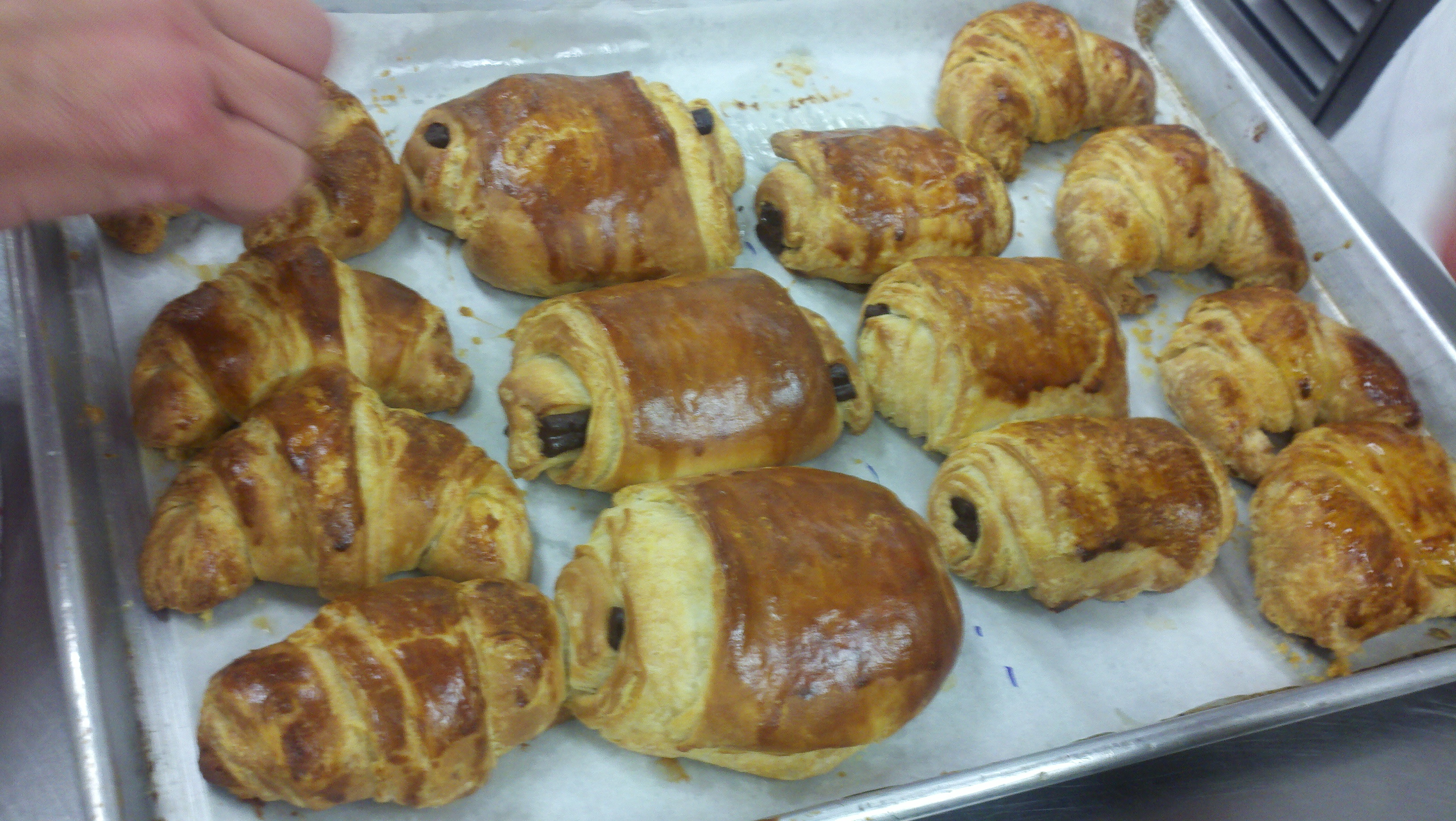 By any reasonable standard, I should have been pulled over and ticketed. Hand-held cell phones and texting are a menace? Sheesh, whoever made those rules never, ever had to brave a late-night drive home from pastry class with a pan full of warm, fresh croissants and pain au chocolat in the seat next to them. I dare any reasonable mortal to make it home under those conditions without swerving seriously at least once while reaching for sticky little almond croissants and scattering hundreds of flaky crumbs across both front seats.
By any reasonable standard, I should have been pulled over and ticketed. Hand-held cell phones and texting are a menace? Sheesh, whoever made those rules never, ever had to brave a late-night drive home from pastry class with a pan full of warm, fresh croissants and pain au chocolat in the seat next to them. I dare any reasonable mortal to make it home under those conditions without swerving seriously at least once while reaching for sticky little almond croissants and scattering hundreds of flaky crumbs across both front seats.
I began the evening at a disadvantage, having missed the making of the croissant dough last week because of work travel. But the final turns, and the rolling out, shaping and filling of the dough is something I’m lucky enough to be able to share with you.
In full disclosure, and at substantial risk of being banished from civilized society for pure perversion, I will say right up front that working with croissant dough has to be one of the loveliest, most sensual, soft, buttery, sheerly yummy things in the world. Its kinship to baby flesh is uncanny; just firm enough to offer real tactile pleasure, and soft enough to be totally delicious. So for me, tonight was one of the funnest sessions we’ve had in pastry class at L’Academie de Cuisine so far (Yes, funnest. Live with it.). I am starting to get a little wistful about wrapping up our 8-week unit on batters and doughs next week. 
There’s a familial relationship among puff, croissant and Danish doughs. It’s a progression: croissant dough is similar to puff pastry, but with the addition of yeast and milk. Danish is similar to croissant dough, with eggs and more yeast. You treat all three similarly, too, making a dough base called a détrempe, wrapping it around a butter-and-flour block called a beurrage, letting it rest, then doing repetitions of rolling it out, folding it, turning it, and resting it.
I never did blog about the making of the puff pastry, and I promise to do that, and link back to it here. I will also try to cobble together for you a post about the making of the croissant dough, relying on the notes of my loyal partner, Michael Edwards. But in the meantime, let me tell you about what we did with the croissant dough this week. (Michael kindly made and saved my portion for me to work with when I got back.)
To make both mini-croissants and pain au chocolat out of one chunk of dough, Chef Claude had us roll out a strip of dough 9 inches wide. We cut one long strip 3 inches wide for the pain au chocolat, leaving the 6-inch-wide strip for the croissants.
Turning first to the pain au chocolat, we cut that 3-inch-wide strip into 3-by-6 inch rectangles. The next step was to fold a chocolate baton into one short edge, like this:
and this:
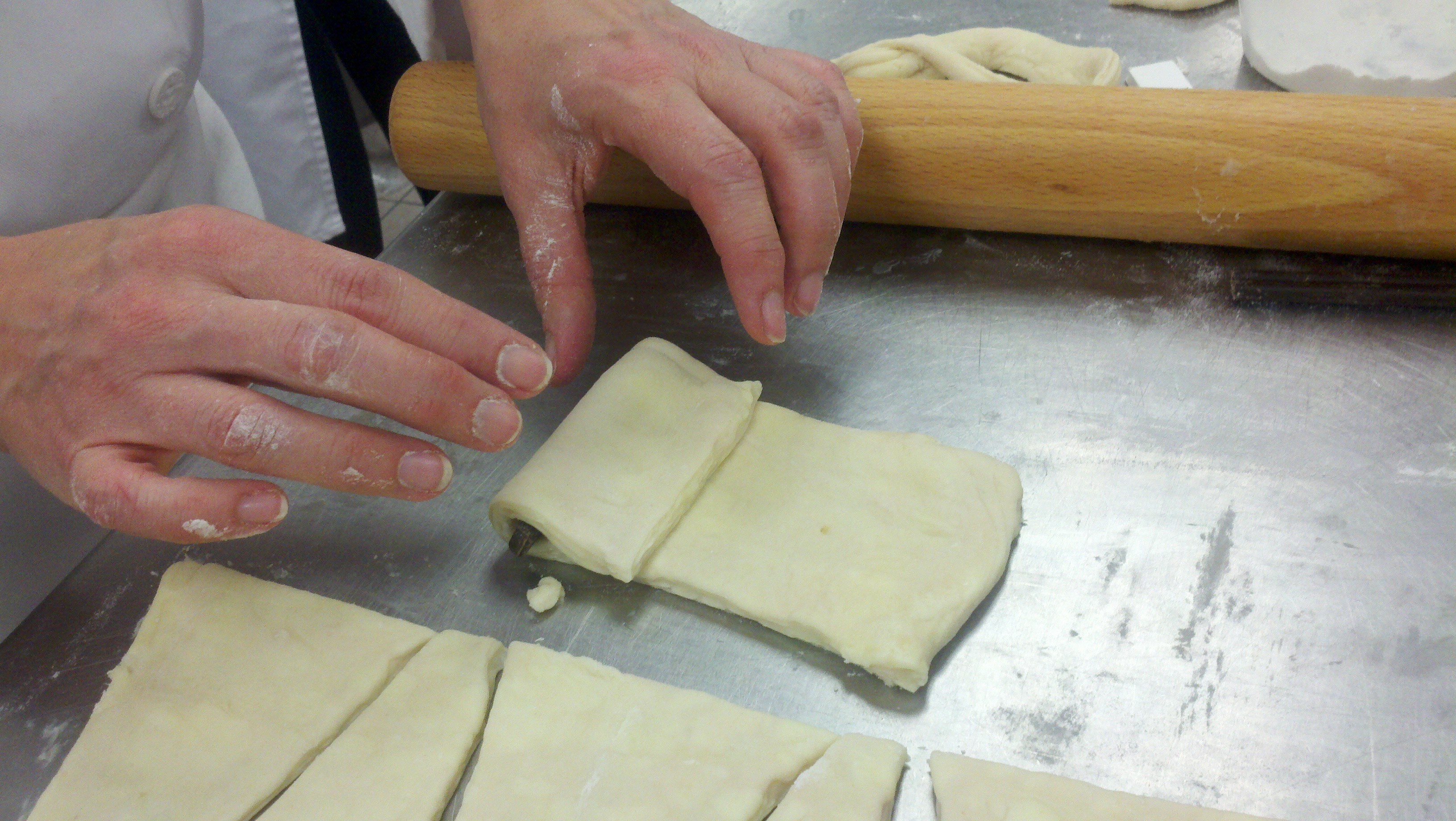 And then we put a second chocolate baton on top of that first newly folded layer…
And then we put a second chocolate baton on top of that first newly folded layer…
… and kept rolling the dough forward over that baton…
… until it’s all rolled up, with the seam tucked firmly at the bottom, against the table. You see the two little batons of chocolate in there?
We flattened the pain au chocolat slightly before lining them up on parchment-lined baking sheets.
Then we turned out attention to the 6-inch-wide strip of dough the remains. Chef and his staff had made us little cardboard cutting guides that we laid on the dough to make the long triangles we needed for plain butter croissants and almond croissants. You can see the cutting of the dough best in a picture of Chef Claude using the guides to cut the triangles:
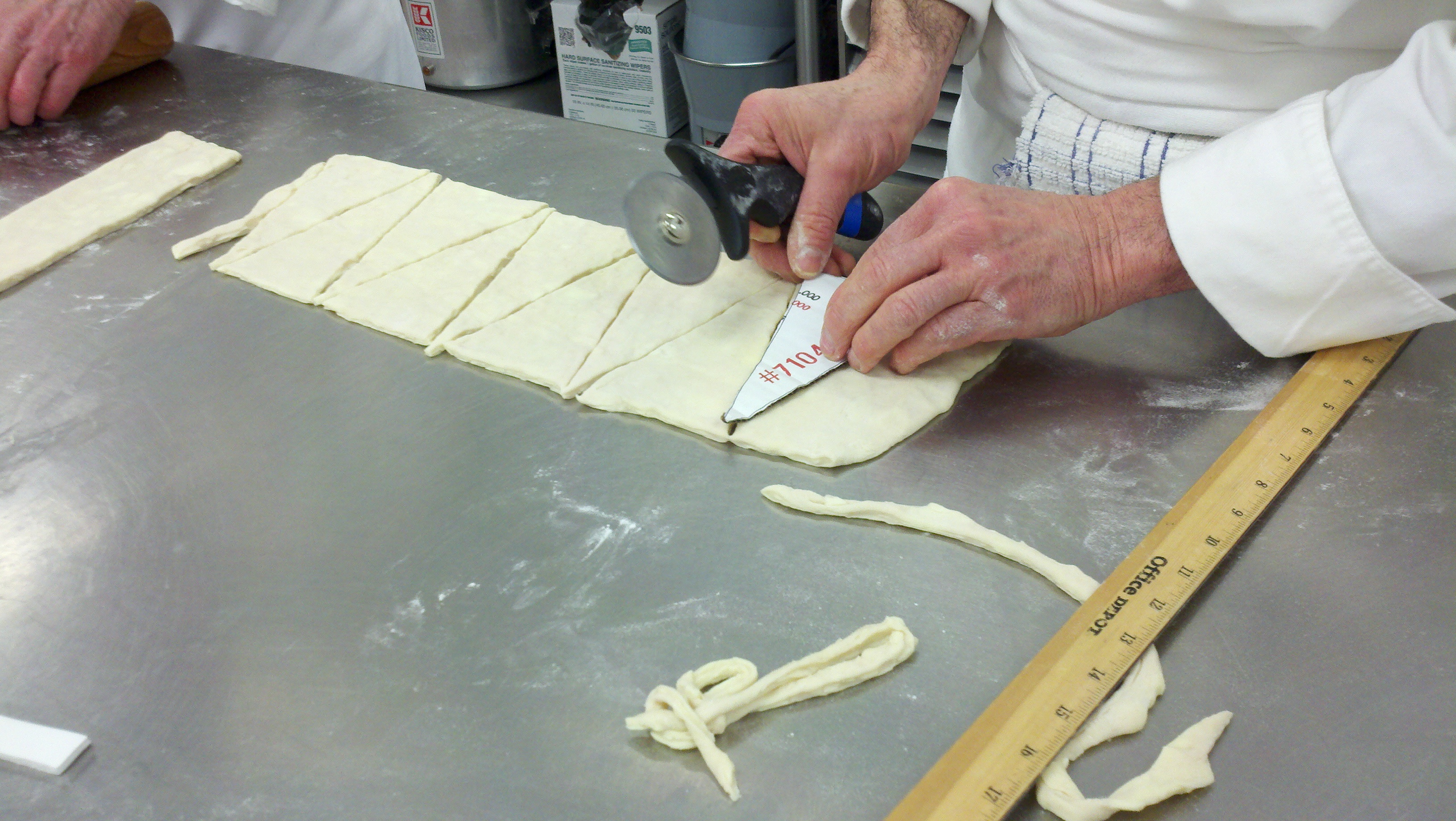 Once the triangles were cut, it was time to roll them into that familiar croissant shape. Taking one triangle, Chef Claude taught us to make a little notch in the center of the top edge.
Once the triangles were cut, it was time to roll them into that familiar croissant shape. Taking one triangle, Chef Claude taught us to make a little notch in the center of the top edge.
 We begin rolling from that notched edge inward, beginning with a tiny fold and then rolling toward the triangle tip, pressing our fingers outward as well as downward as we went. We took breaks every couple of seconds to stretch the triangle’s tip away from the notched edge, elongating and flattening the dough a bit. This is a hard process to describe in writing; it aims to build surface tension in the dough and get it tightly rolled at the same time. Once the notched edge was completely rolled down to the triangle trip, and the tip was tucked neatly underneath the pastry, we curved the “legs” (the corners of the notched edge) around to make the curved croissant shape.
We begin rolling from that notched edge inward, beginning with a tiny fold and then rolling toward the triangle tip, pressing our fingers outward as well as downward as we went. We took breaks every couple of seconds to stretch the triangle’s tip away from the notched edge, elongating and flattening the dough a bit. This is a hard process to describe in writing; it aims to build surface tension in the dough and get it tightly rolled at the same time. Once the notched edge was completely rolled down to the triangle trip, and the tip was tucked neatly underneath the pastry, we curved the “legs” (the corners of the notched edge) around to make the curved croissant shape.
I wish I could insert a video clip here of Chef Claude doing the croissant rolling. You can see how he presses outward with his fingers, and stops several times to stretch that triangle tip of the croissant. But my blog doesn’t have video capability right now, so you’ll have to content yourselves with this description. I bet there are great video clips online of competent people doing this. Check them out; it’s hard to get it without seeing it or doing it.
We did the same rolling for almond croissants, except we put a dab of almond cream (three parts frangipane to one part pastry cream) near that notched edge, and we folded each of the back corners over the cream before starting to roll.
Here we are, nearly ready for proofing:
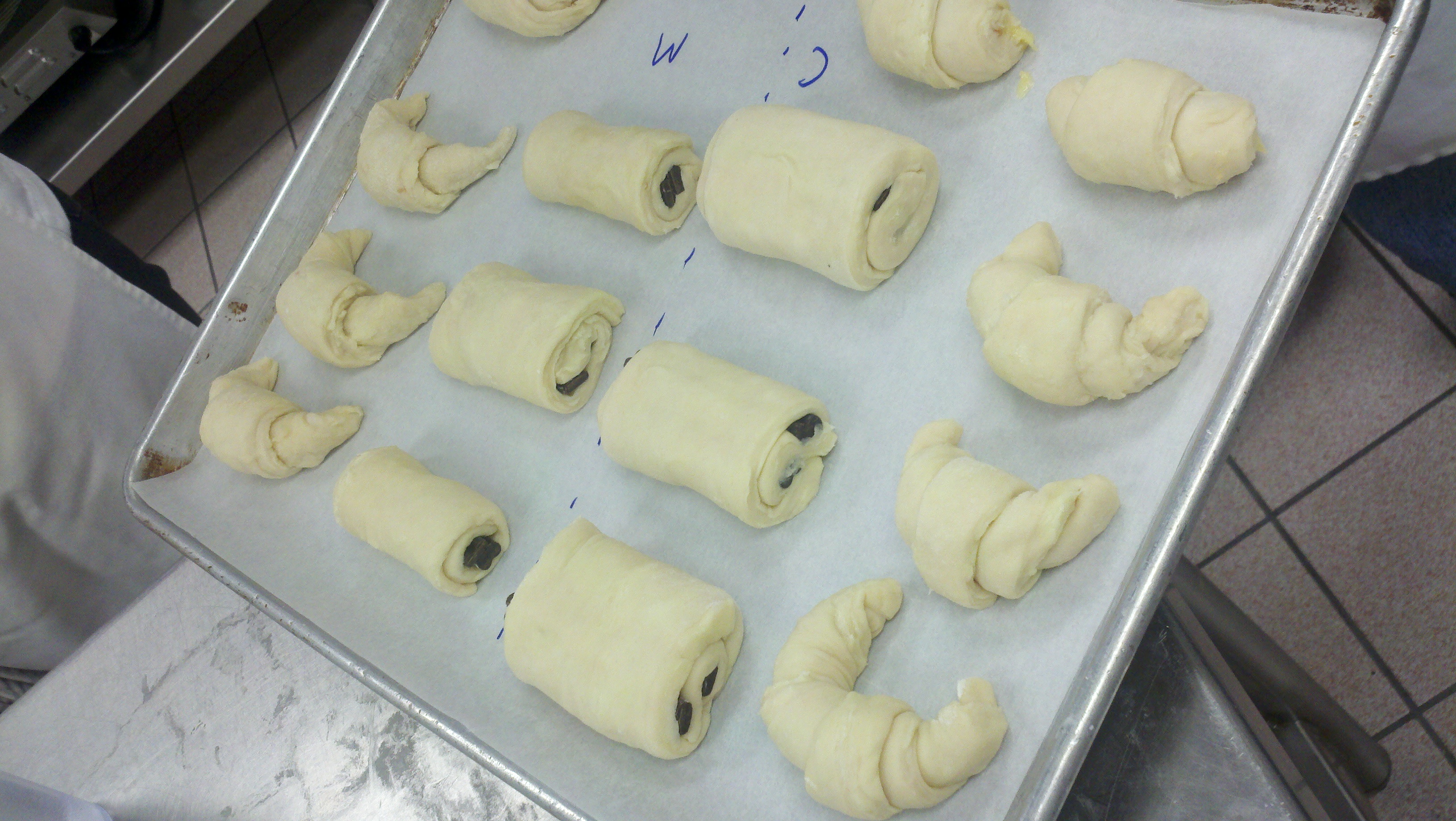 And again with a little wash of strained egg:
And again with a little wash of strained egg:
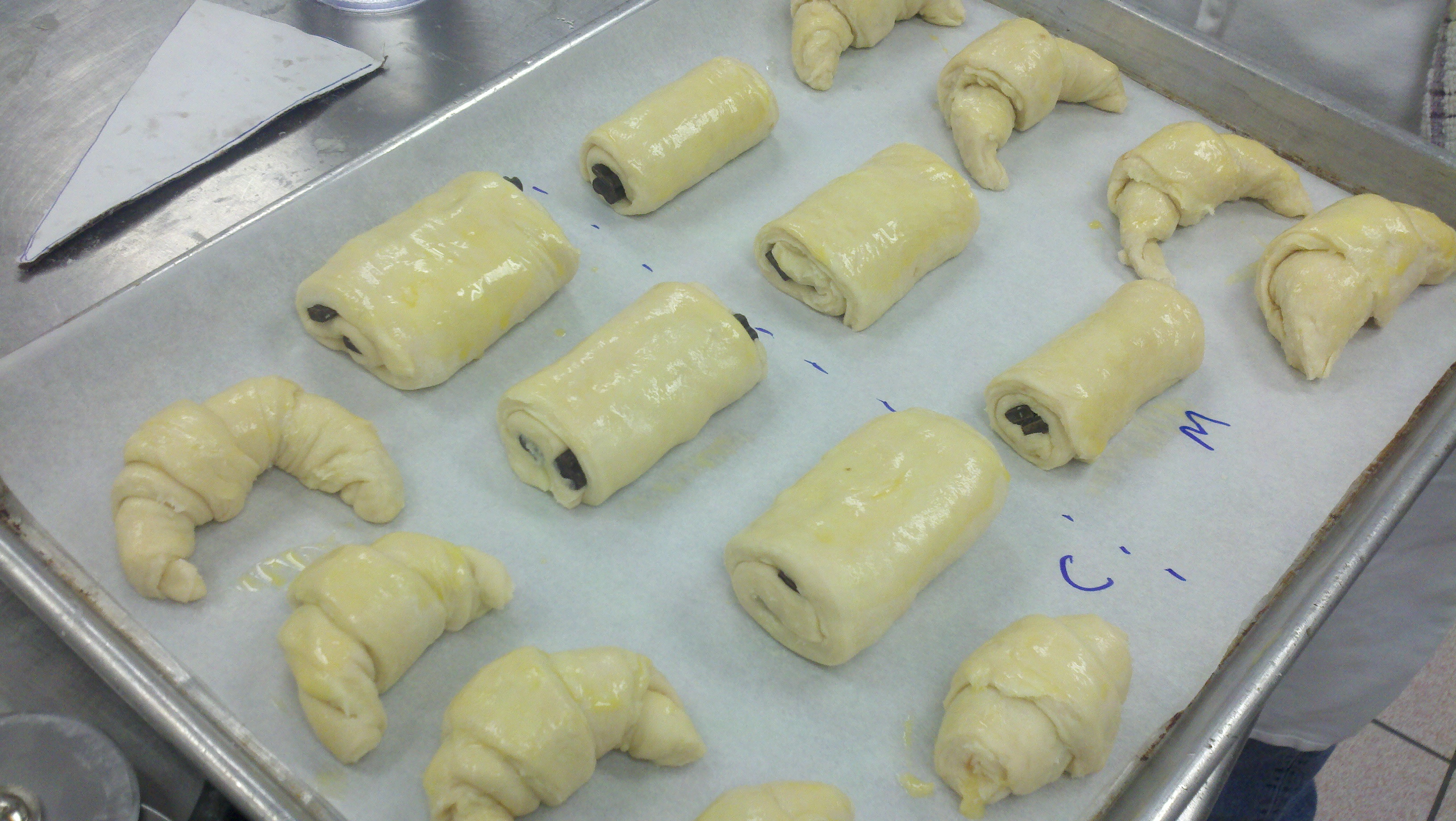 Now it’s time to let them rise (proof) in a warm, moist place for a while before baking. The assistants created a neat little proofing box where the dough could rise without a draft while it enjoyed moist heat. See how they covered the cooling rack, and put pots of hot water inside.
Now it’s time to let them rise (proof) in a warm, moist place for a while before baking. The assistants created a neat little proofing box where the dough could rise without a draft while it enjoyed moist heat. See how they covered the cooling rack, and put pots of hot water inside.
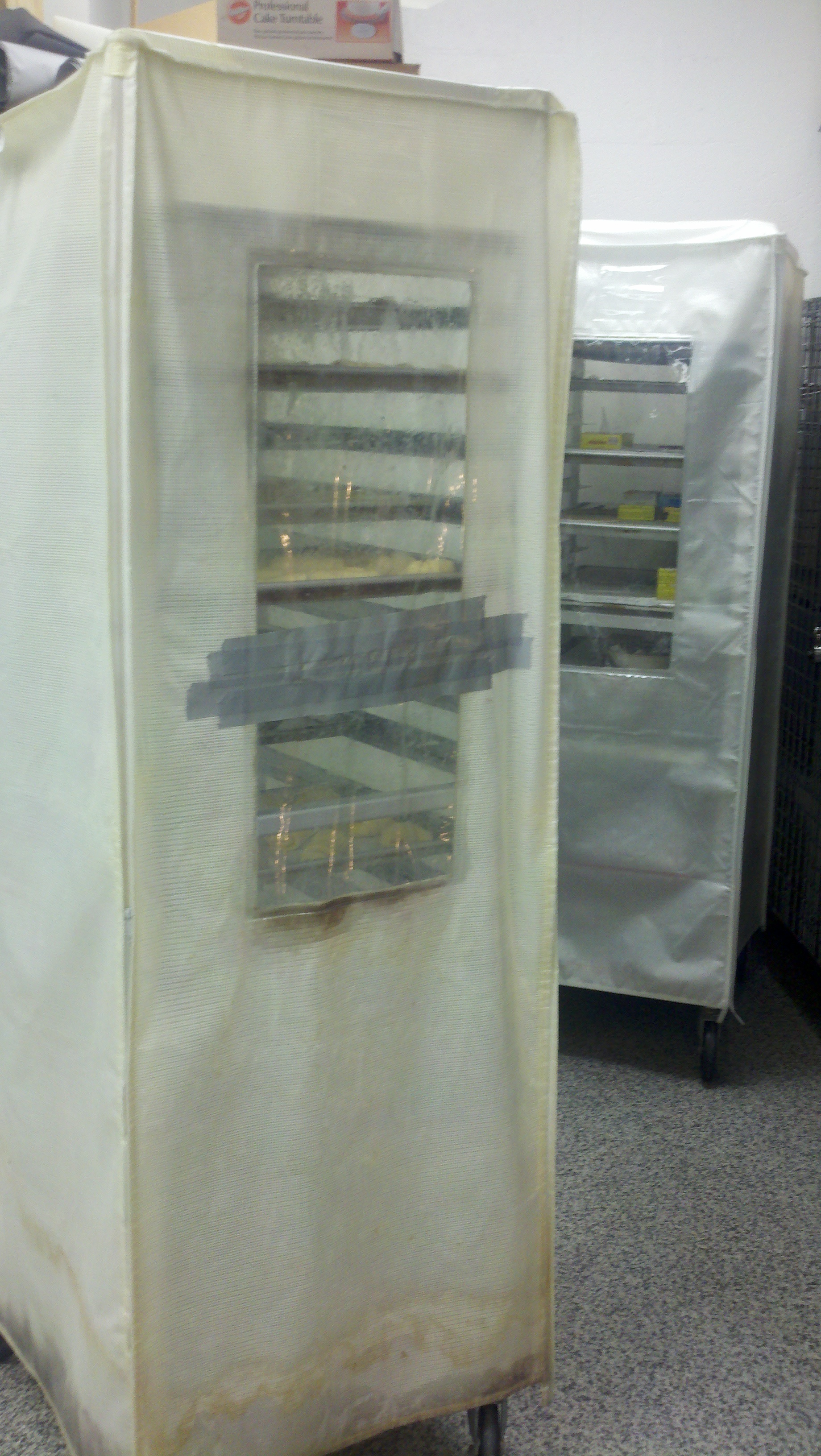 Some of of those pans of water were kept hot with a hot brick.
Some of of those pans of water were kept hot with a hot brick.
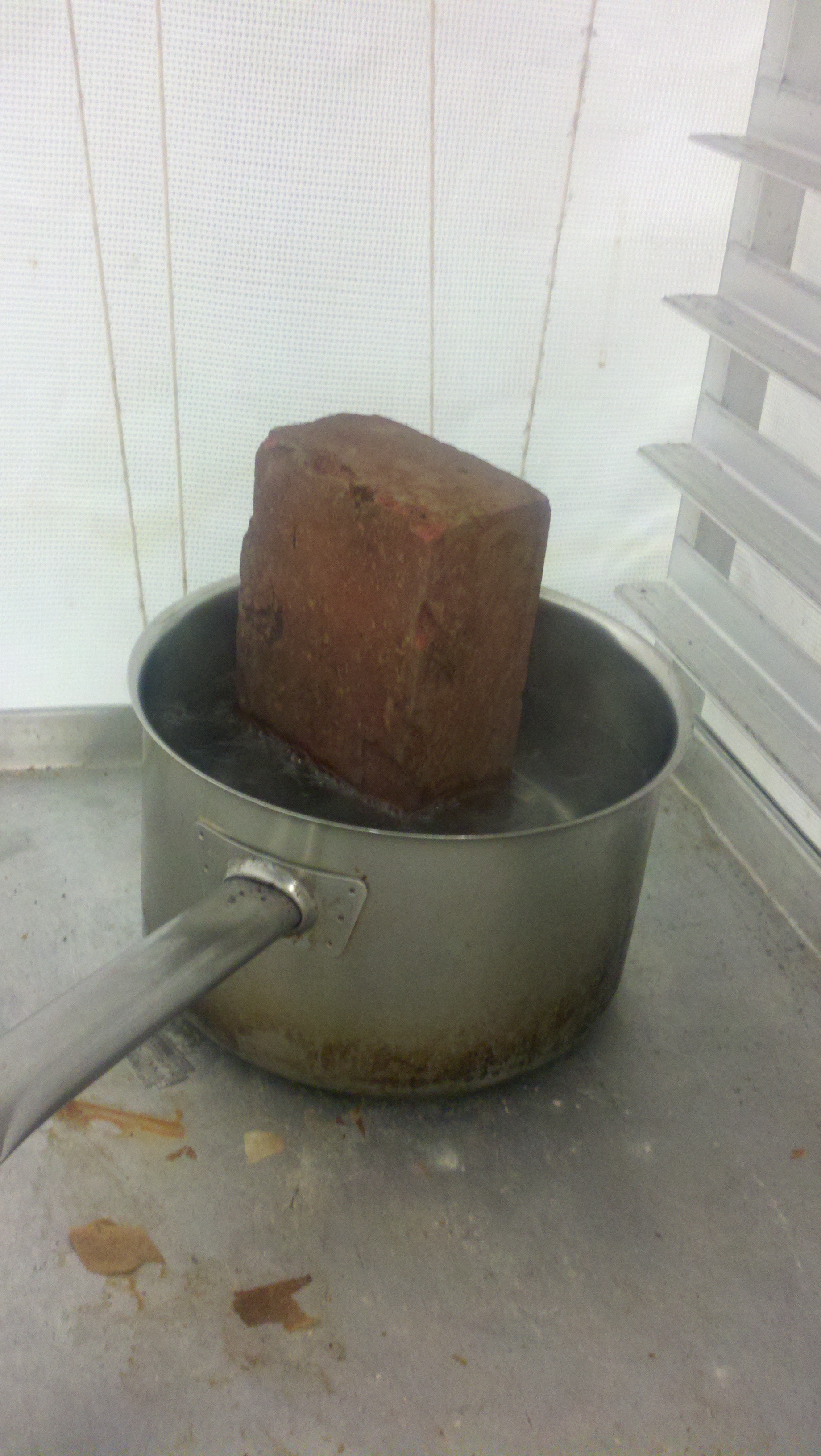 Somehow, I just don’t see myself doing this in my kitchen at home. I will be hard pressed to recreate the perfect proofing conditions: 85 degrees and moist. Some folks manage this in their ovens, preheating them a short while and turning them off, and leaving a pan of hot water in with the dough while it proofs.It takes a bit of tending to keep the temperature and moisture right, though. Chef said we could proof the dough longer and cooler, by putting it in the refrigerator overnight.
Somehow, I just don’t see myself doing this in my kitchen at home. I will be hard pressed to recreate the perfect proofing conditions: 85 degrees and moist. Some folks manage this in their ovens, preheating them a short while and turning them off, and leaving a pan of hot water in with the dough while it proofs.It takes a bit of tending to keep the temperature and moisture right, though. Chef said we could proof the dough longer and cooler, by putting it in the refrigerator overnight.
So here’s what we had at the end of our heavenly evening of croissant dough:
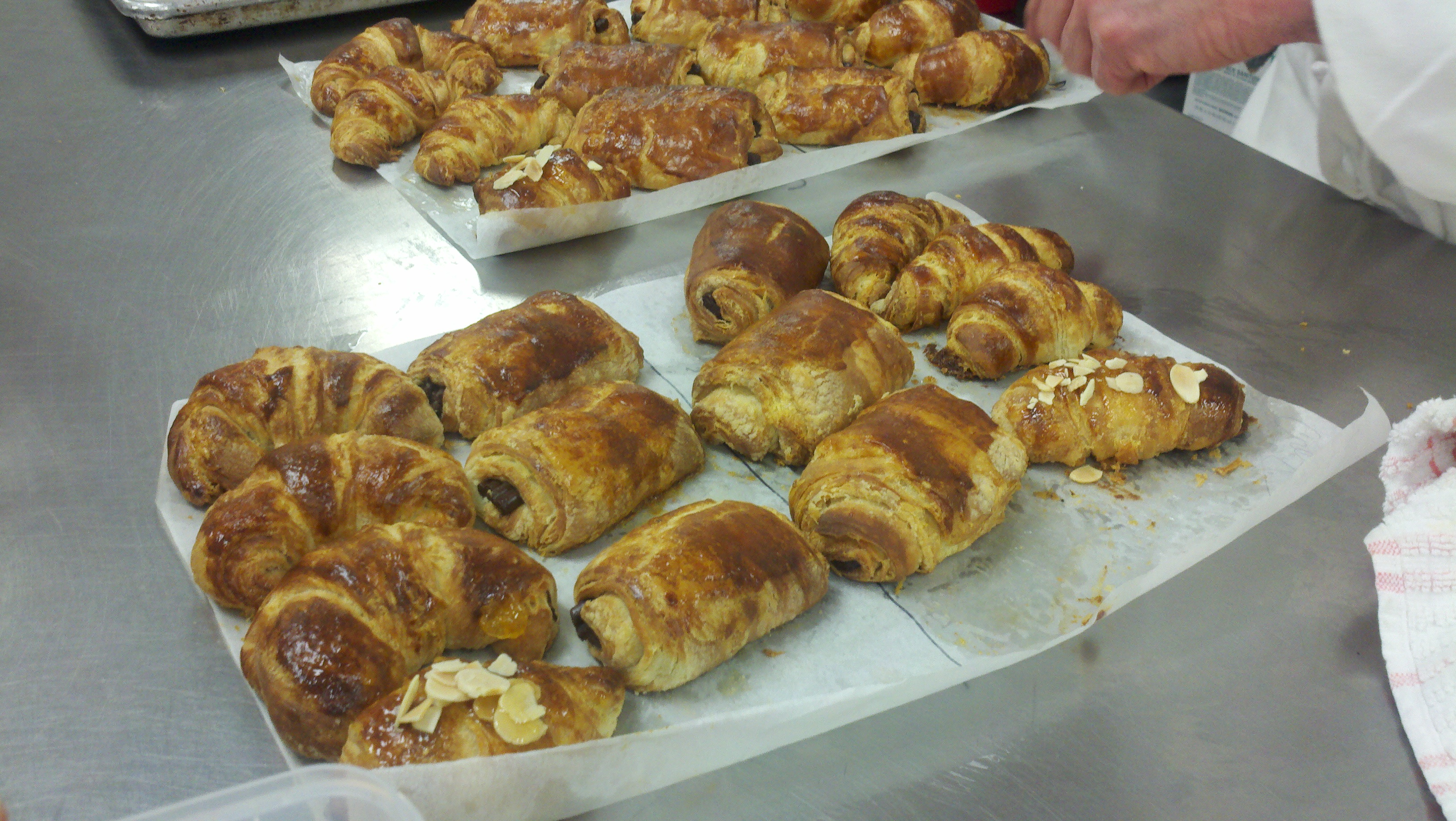 … and here’s a Cecil B. DeMille closeup of one of my flaky friends:
… and here’s a Cecil B. DeMille closeup of one of my flaky friends:
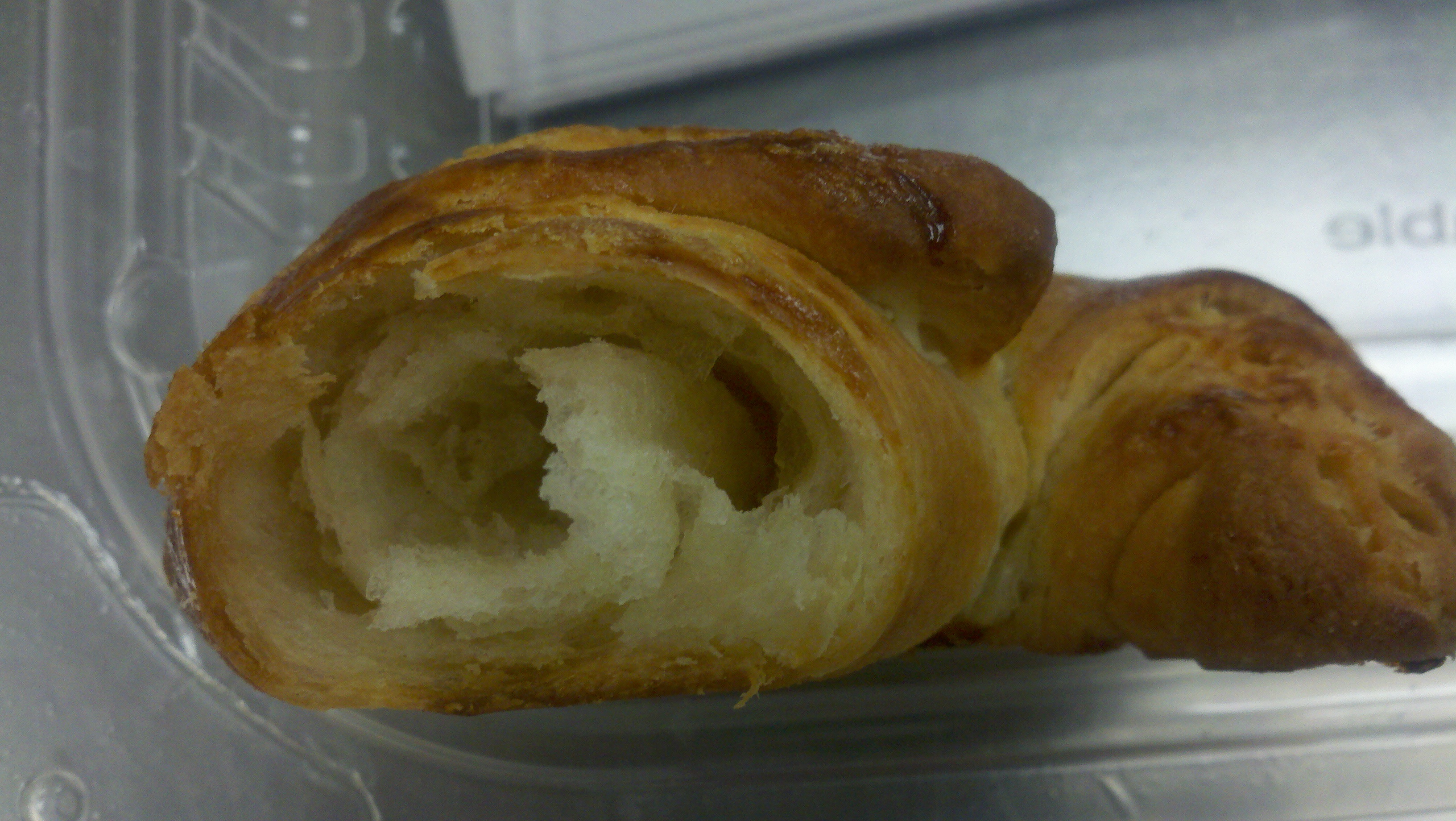 Off to bed with happy tactile memories of an evening working with croissant dough.
Off to bed with happy tactile memories of an evening working with croissant dough.




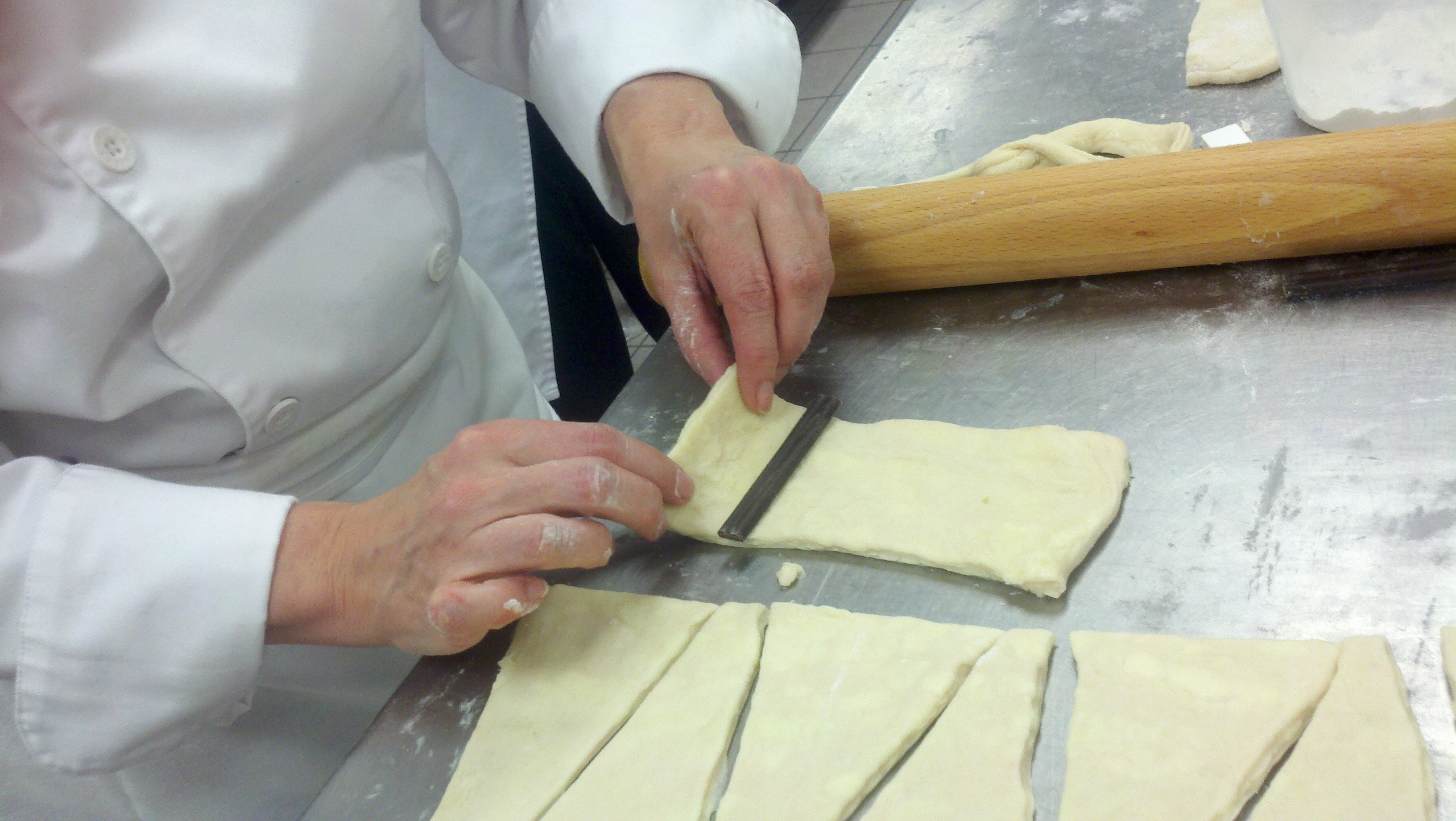
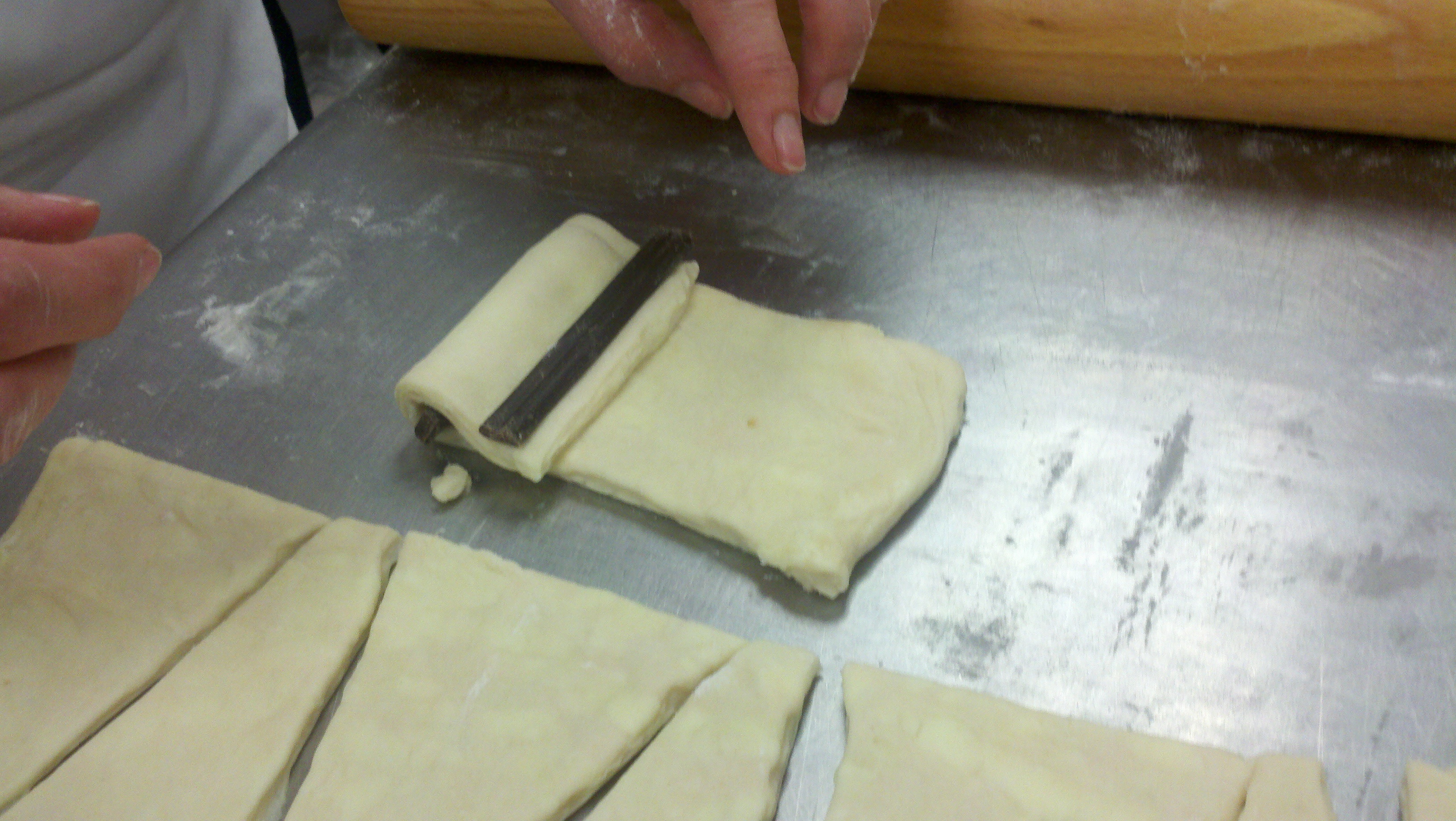


Playing on words : no wonder why it’s a pain au chocolat!